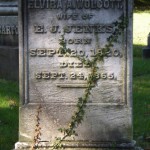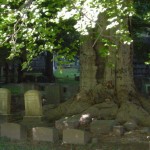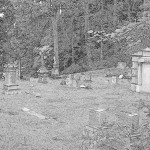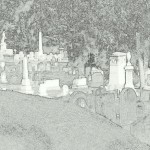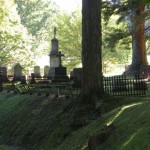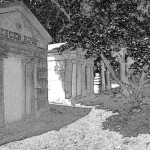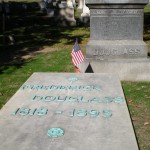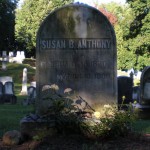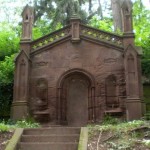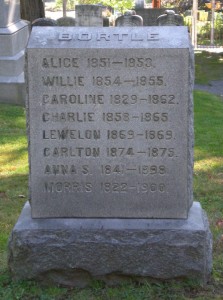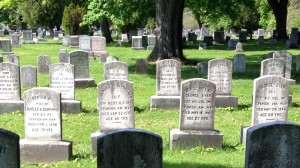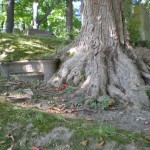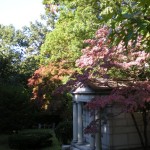A Halloween Special: Mount Hope Cemetery
Click to enlarge all images
Mount Hope Cemetery in Rochester, New York, can be a spooky place. Many of the stones are weathered and discolored, and some of the trees have become so massive that their root systems are infiltrating the burial plots. The cemetery has been in use since 1838, making it the one of the very oldest municipal Victorian cemeteries in the United States. It’s also my favorite place in Rochester, my hometown.
Part of the attraction lies in the landscape itself. The cemetery covers approximately two hundred acres, most of which are hilly and forested. Some sections are densely populated, creating varied landscapes of monuments and markers. Others are more heavily wooded, and it’s easy to forget that one is in a major city when you’re there; it’s cool and quiet, save the wind through the trees and the noises of the birds and squirrels. In places, it’s marvelously gothic, looking like a movie set, and in other places one is reminded that it’s still an active cemetery. The monuments run the gamut from today’s typical flat stones that are easily mowed over to elaborate statues and mausoleums, reflecting the wide range of people who have been interred there.
Some of those people are extremely famous. Rochester was at the heart of the “Burned Over District” in the decades before the US Civil War, witnessing many manifestations of the Second Great Awakening, from the evangelical sermons of Charles Finney to Joseph Smith’s discovery of the Book of Mormon and the spiritualism of the Fox Sisters. It was also key city for nineteenth-century reform movements. Frederick Douglass, who published the newspaper the North Star in Rochester, is buried at Mount Hope, as is women’s rights advocate Susan B. Anthony. Less well known today is Lewis Henry Morgan, one of the country’s first and most influential anthropologists.
As in most cemeteries that are the resting place of famous people, most tourists at Mount Hope visit Douglass and Anthony and then move on. For me, another major attraction of any cemetery is the opportunity it provides to pay one’s respects to the not-so-famous people and to reflect on their lives. Sometimes it’s the naming patterns that catch my eye—all the people named “Woodrow Wilson Smith” or “Ulysses Grant Jones,” for example. At other times, it’s reflecting on the varying spans of people’s lives. Look closely at the dates on the Bortle family stone in Mount Hope, for example, and consider that family’s pain. As historians, I think it behooves us to remember the humanity of our subjects, and a trip to the cemetery can help.
Visiting Mount Hope has also prompted me to think about certain major historical events differently. Monroe County had a considerable number of volunteers for the Spanish-American War in 1898, and Mount Hope has a section devoted to those veterans and their wives. In looking at the dates on those stones, one can see that people with direct experience of that war were alive—and potentially voting—well into the 1960s and even the early 1970s. That’s a war that I tend to think of as a fairly brief moment in US history, and certainly one that looks well and firmly ended with US anti-colonialism in World War II. Seeing these stones complicated my understanding of the war, and now I’m curious to understand its legacy—and the story of so many Rochesterian volunteers—more thoroughly.
I’ll leave you with two of my favorite images from my most recent visit to Mount Hope. The first is of the stone memorializing J. Hyne. Imagine it standing next to but entirely independent from a tree when it was first installed, and see how the growth of the tree over time has made stone and tree appear as one. Was that the original intention? And finally, this image of a mausoleum on Hillside Avenue, a section of the cemetery that is only accessible on foot, and even then, there’s no path. It’s particularly quiet, and particularly beautiful.
If you’d like to know about Mount Hope Cemetery, please visit the Friends of Mount Hope Cemetery website. The Friends write about the cemetery, offer tours, and conduct restoration projects.
WEBSITE: http://www.fomh.org/
